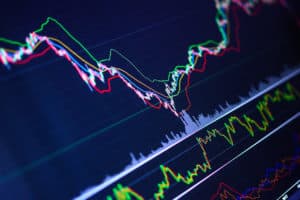 Traditionally, electronic liquidity providers (ELPs) have sat downstream in the trading process at the end of a sell-side smart order router. However, with increased speed and trading efficiency on top of the wish lists of desk heads for 2022, we expect to see this model change, with ELPs moving up the food chain and publishing liquidity directly into the buy-side desktop.
Traditionally, electronic liquidity providers (ELPs) have sat downstream in the trading process at the end of a sell-side smart order router. However, with increased speed and trading efficiency on top of the wish lists of desk heads for 2022, we expect to see this model change, with ELPs moving up the food chain and publishing liquidity directly into the buy-side desktop.
The driver for the rise of ELPs has been the increased focus from buy-side clients on analysing their tag 30 – last market – on executions. The analysis has shown that if they’re executing against these firms in the first instance, moving forward, it makes sense to source the liquidity directly. From a business and technology perspective, the challenges which stem from this are two-fold. Firstly, how can execution management system (EMS) or order management system (OMS) vendors incorporate this new liquidity into their workflow, as the number of updates and ticks can be sizable in volume and will be tailored per client? Secondly, how can the buy-side evidence best execution, and what role does the traditional broker play in this? It will be fascinating to see how this develops in the next year.
– Andy Mahoney, managing director, FlexTrade EMEALiquidity aggregation will remain key and superior connectivity for liquidity events, specifically automated solutions around the closing auction, will continue to be in focus. Venue connectivity and a deep understanding of how to optimise liquidity capture at each specific venue, as the regulatory landscape evolves, is crucial. Our new price tier Dark MAQ logic will support efforts to maximise liquidity capture whilst minimising associated costs.
Buy-side traders continue to engage with us on how best to monitor performance and impact. We enable real-time analytics and diagnostics having built a proprietary post-trade analytics tool to help our clients’ measure execution performance. It is imperative that the sell-side remains nimble and adapts electronic offerings to meet the evolving needs of clients. Technology will continue to play an increasingly important role in execution. Our smart order router (SOR) and all algos are developed and maintained in-house and we continue to invest in our AI powered solutions, as well as our core algo platform to provide innovative solutions for a wide variety of client requirements. Continuing to build long-standing client relationships and providing strong coverage and advisory will remain at our core.
It will be a defining year for the European consolidated tape as legislators agree on a framework that could have major implications on the overall success of the initiative. The impact of regulatory divergence between the UK and the EU on the liquidity landscape could also become clear as regulators continue adapt rules under the MiFID II Review and UK Wholesale Markets Review.
– Bianca Gould, co-head of electronic sales and trading, RBC Capital Markets & Hayley McDowell, EU electronic sales trader and EU market structure consultant,RBC Capital MarketsAll signs point to the end of the 40-year bull market in bonds, with Fed tapering and inflation acting as drivers. But the changes will have ripple effects on US corporate bond trading and liquidity. Interest rates and market volatility will rise, creating a more critical need than ever before to efficiently find and connect natural buyers and sellers. Further, it won’t suffice to find one buyer for each seller. Dealers will have to identify and aggregate multiple buyers and their liquidity together to execute block trades. Amidst these conditions, liquidity scarcity and the need for better price discovery in illiquid bonds will be some of the key challenges that market participants continue to look to solve for in 2022.
Though corporate bond trading is increasingly moving to electronic platforms, liquidity challenges will remain without the ability to understand pre-trade, real-time liquidity and without mechanisms to aggregate liquidity around a bond. New tools that leverage data science will help dealers aggregate liquidity and trading opportunities across their customer networks, and help institutional investors discover natural liquidity and understand what can actually be traded at any time, improving transparency and price discovery.
– Attributed to Jim Toffey, CEO and co-founder, LTX, a Broadridge CompanyAccess to liquidity will remain a priority in 2022, as asset managers continue to seek out new options to identify and connect to new sources of liquidity. The flexibility and autonomy shown by market participants in the initial response to the pandemic, is now evolving to allow the buy-side to rethink the possibilities of how they engage with new liquidity discovery mechanisms.
There are increasing signs of collaboration across the asset management industry. Firms are working together to drive the technological infrastructure development necessary to integrate new entrants into existing market structures and develop standards that ultimately help investors get their business done. This trend will continue to gather pace in 2022 allowing more automation at every stage of the process – from liquidity discovery and book-building, through to execution and settlement – all to the benefit of the buy-side community overall.
– Mark Badyra, CEO, Appital